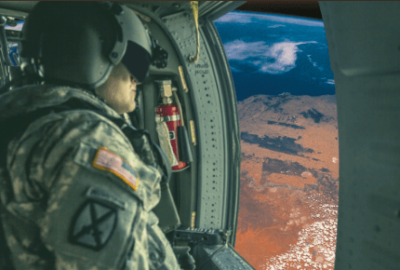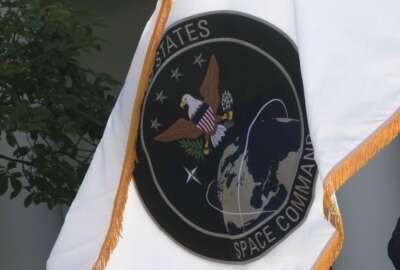SPACECOM doesn’t even have a formal office, but it’s in the center of future conflict
U.S. Space Command is dealing with billionaires, rules of engagement and staffing up its offices.
U.S. Space Command is only two years old and has yet to reach its full operational capability, but the real and philosophical problems it needs to handle continue to multiply.
Space debris, eccentric billionaires, intercontinental ballistic missiles, diplomacy and rules of engagement are all pressing issues lining up in its portfolio.
Despite the challenges, SPACECOM is still about three years away from being fully staffed and at total capability, command chief Gen. James Dickinson told members of the Senate Armed Services Committee Tuesday.
Dickenson said SPACECOM is about 45% to 50% staffed, with the rest of the command made up of contractors filling in for full-time service members.
“It’s based on many things,” Dickenson said. “One is personnel, the other has to do with expertise within the command making sure that I have completely trained for the processes and procedures within the command to be able to do the entire mission set that I’ve been given.”
SPACECOM was formed in 2019, and is tasked with conducting operations in, from and to space to deter conflict, defeat aggression and deliver space combat power for the military, the command’s mission statement says.
That mission is proving to be more complex than ever as Russia asserts itself into Ukraine and China continues to test capabilities outside of the planet.
One of SPACECOM’s main concerns is all of the objects circling the earth. Dickenson said when the command stood up, there were 25,000 pieces of space debris floating in orbit. Today, that number has ballooned to 44,000.
SPACECOM tracks those objects because they pose a threat to U.S. and commercial assets in space. One high profile example is Object No. 36912, which threatened the International Space Station in 2015.
The object was a piece broken off from a Soviet weather satellite that was launched In 1979; it forced members of the ISS to huddle in place until the threat passed. Sen. Mark Kelly (D-Ariz.), who now sits on the Senate Armed Services Committee, was on the space station during the incident.
The military is looking into ways that it can clean up the increasingly congested area outside of the earth’s atmosphere.
Leaders of the Space Force’s Rapid Capabilities Office and Space and Missiles Systems Center are hunting for solutions by working with industry.
Tracking the increasing number of objects in space is one of the more cogent missions of SPACECOM. Other areas have a theoretical bent to them, like how weapons will be used in space and what are the agreed upon uses of them.
Dickenson said the command and the Defense Department are currently working through things like creating international norms for space weapons.
Last July, the Pentagon released its five tenets for responsible behavior in space, which Dickenson said will inform those larger policies about weapons in space.
Those tenets include avoiding the creation of harmful interference, operating with regard to others in a professional manner and limiting debris.
Of course, individual nations aren’t the only actors outside the atmosphere these days. Corporations now influence the space domain as well. Elon Musk is providing his Starlink service to Ukraine so the country can continue to have internet access after Russia shut down some connections.
SPACECOM is taking into account how those actors affect the balance of power in space and what implications they may have for the United States.
Dickenson said Starlink is an example of how proliferation of connections and sensors can help keep continuous services to the military.
SPACECOM is currently working on building out its architecture to link sensors.
“We have made a lot of progress in identifying and incorporating sensors that we traditionally did not use for space domain awareness, missile warning or missile defense in the global perspective,” Dickenson said. “Our goal is to link these sensors together from a terrestrial perspective. We’re linking our space-based assets and bringing them into a common operating picture. We’re working towards that to the ultimate piece where we have one operating picture that has those sensors fused.”
Copyright © 2024 Federal News Network. All rights reserved. This website is not intended for users located within the European Economic Area.
Scott Maucione is a defense reporter for Federal News Network and reports on human capital, workforce and the Defense Department at-large.
Follow @smaucioneWFED






